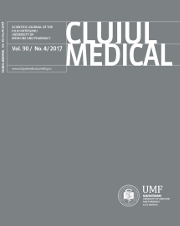Gastric Microbiota: Tracing the Culprit
DOI:
https://doi.org/10.15386/cjmed-854Keywords:
Gastric microbiota, Microbiome, Stomach, Helicobacter pyloriAbstract
The gastric environment has been long time considered bacteria-free, but the discovery of Helicobacter pylori (H. pylori) in 1982 superseded this conception. Over the last decades new diagnostic methods have been developed, starting with culture-dependent and advancing to culture-independent ones. These modern techniques provide new insight into the composition and influence of this ecosystem on the entire gastrointestinal tract. H. pylori is no longer considered the only microorganism in the stomach, other non-H. pylori microbial species may populate the same environment and exercise their role. Current knowledge suggests possible links of these bacteria with gastroduodenal diseases, such as peptic ulcer and gastric cancer but most of them need further scientific evidence. This review summarizes current information on these complex interrelations between gastric microbial communities and host in health and disease.
Downloads
Published
How to Cite
Issue
Section
License
The authors are required to transfer the copyright of the published paper to the journal. This is done by agreeing to sign the Copyright Assignment Form. Whenever the case, authors are also required to send permissions to reproduce material (such as illustrations) from the copyright holder.

The papers published in the journal are licensed under a Creative Commons Attribution-NonCommercial-NoDerivatives 4.0 International License.

